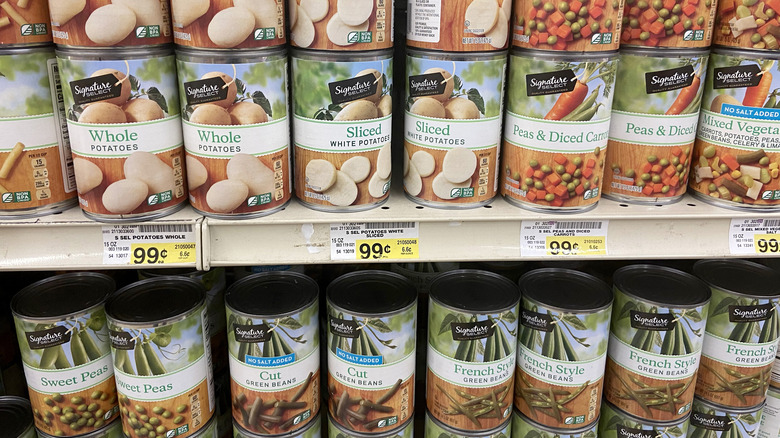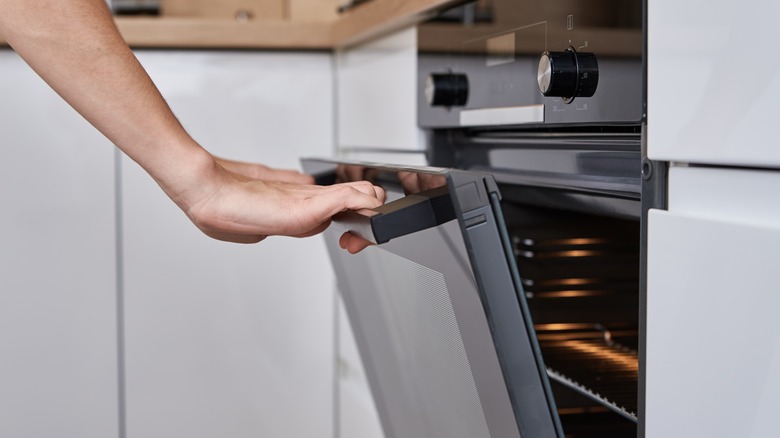The Simple Way To Take Your Canned Vegetables To The Next Level
There are varied opinions on canned foods — especially canned vegetables. Those who don't care for them argue that they don't taste the same as fresh vegetables while others who use them often like them for their convenience, per EatingWell. Somehow canned tomatoes found a loophole around the negative reputation many canned vegetables get.
If canning is simply a method of preserving and storing vegetables, canned veggies should be praised instead of avoided, right? Admittedly, the canning process can alter the flavor or texture of fresh vegetables. The Division of Agriculture and Natural Resources at the University of California reports that the starchiness of corn, peas, and lima beans causes them to substantially expand in canning fluid. Similarly, veggies covered with olive oil (or, to a lesser degree, sunflower oil) absorb the oil's natural flavor and are often thickened by its dense, high content of monounsaturated fats, per Taste the Can. It's like how sometimes, when you put a plate of leftovers in the fridge, they come out tasting like "refrigerator".
Luckily, there's an easy way to transform your canned vegetables from being the last resort to the star of the show -– and it's free.
Grab that baking sheet
Roast those veggies! Tabitha Brown, vegan Instagram foodie (with 4 million followers!), shows home cooks her method. She drains and rinses her canned veggies, then lays them out on a baking sheet to roast at 475 degrees Fahrenheit. The result is surprisingly transformational — or perhaps, just surprisingly simple.
The key to a successful roast is knowing the optimal temperature, and it varies per vegetable. According to the New York Times, dense, low-moisture vegetables (like water chestnuts or hominy) need lower heat and more time in the oven than moister vegetables (like corn or diced tomatoes). The site recommends roasting moister vegetables at 425 degrees Fahrenheit for 30 minutes, rotating once for an even bake, although oven temperature and roasting time depend on the density and type of vegetable.
TODAY recommends keeping a close eye on moister vegetables as they roast because their high water content makes them more susceptible to drying out and shriveling up in the oven. Tender veggies can even be wrapped in aluminum foil during roasting for additional protection.
After roasting, season as you please! You can even toast your spices for added flavor. In her video, Tabitha Brown seasons her canned mushrooms, hearts of palms, and chickpeas with garlic powder, sesame oil, curry, and coconut amino (soy sauce is a similar substitute). But most veggies roast up well with just olive oil, salt, and pepper, too.

